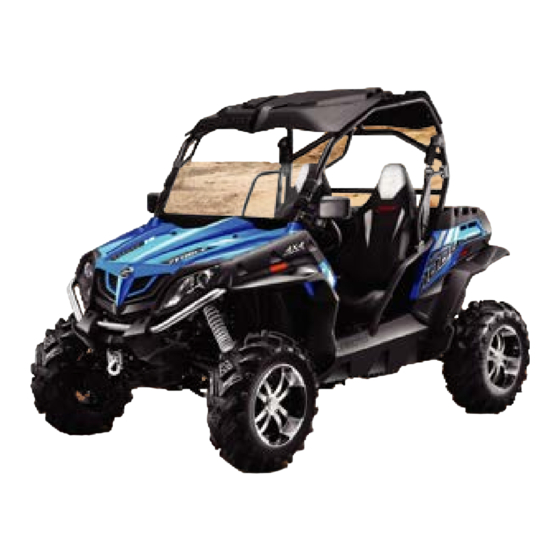
Table of Contents
Advertisement
Quick Links
- 1 Table of Contents
- 2 Zforce 800 Ex Specifications Zforce 800 Ex Specifications
- 3 Zforce 800 Trail Specifications Zforce 800 Trail Specifications
- 4 Controls and Features Controls and Features
- 5 Dashboard Indicators and Warnings Dashboard Indicators and Warnings
- 6 Maintenance Maintenance
- Download this manual
Advertisement
Table of Contents















Need help?
Do you have a question about the ZFORCE 800EX and is the answer not in the manual?
Questions and answers
What type of JASO oil for z force 800
The recommended JASO oil type for the CF MOTO ZFORCE 800EX is JASO-certified engine oil suitable for wet clutches, commonly sold as motorcycle oil.
This answer is automatically generated
Где находится номер двигателя?